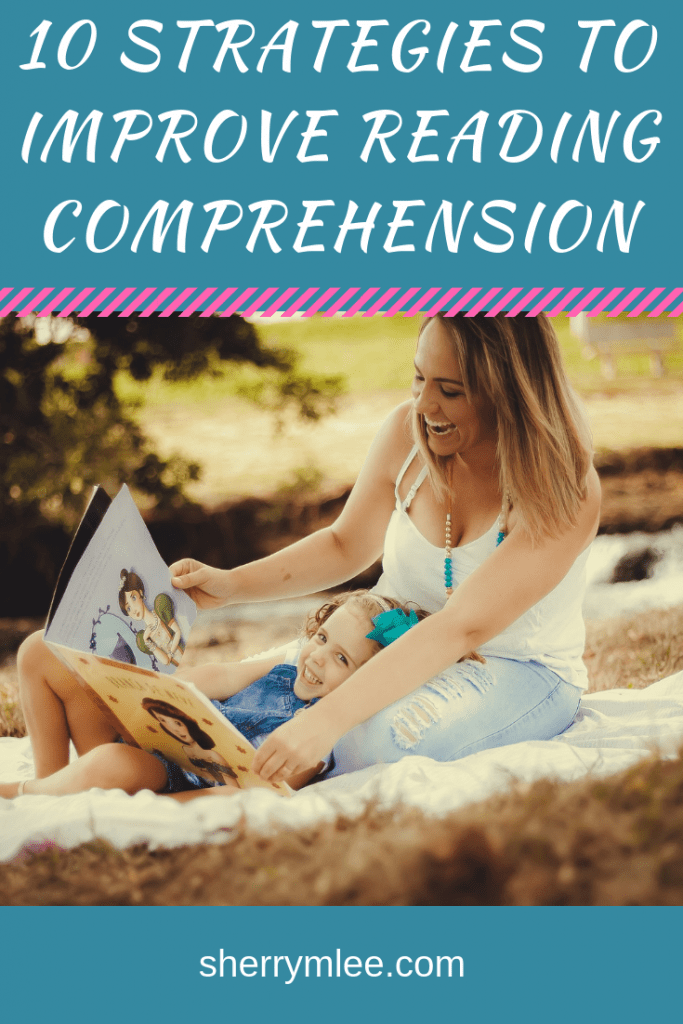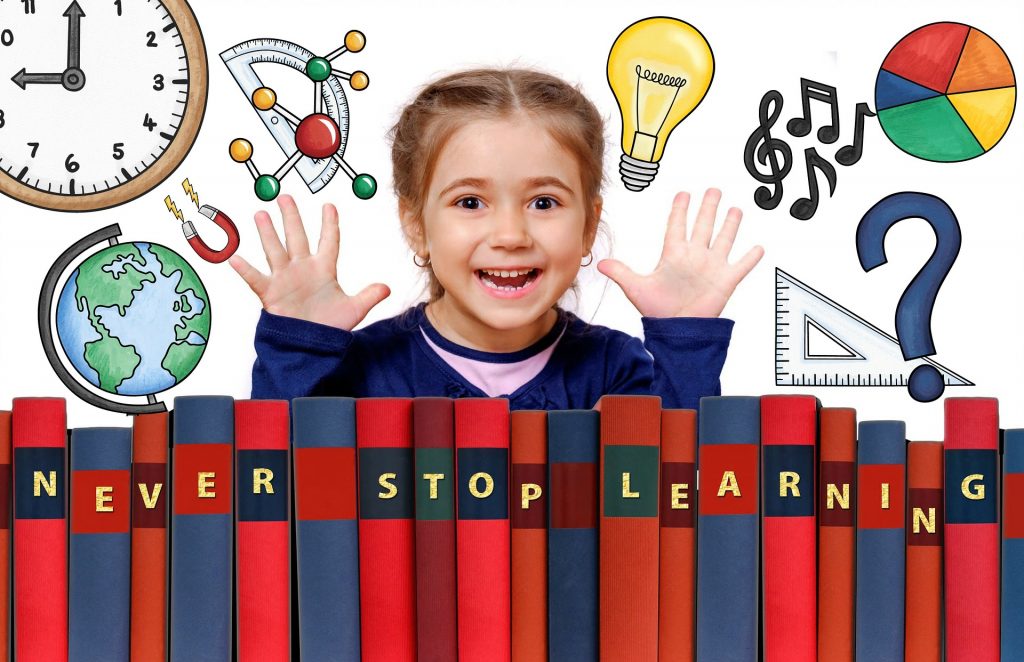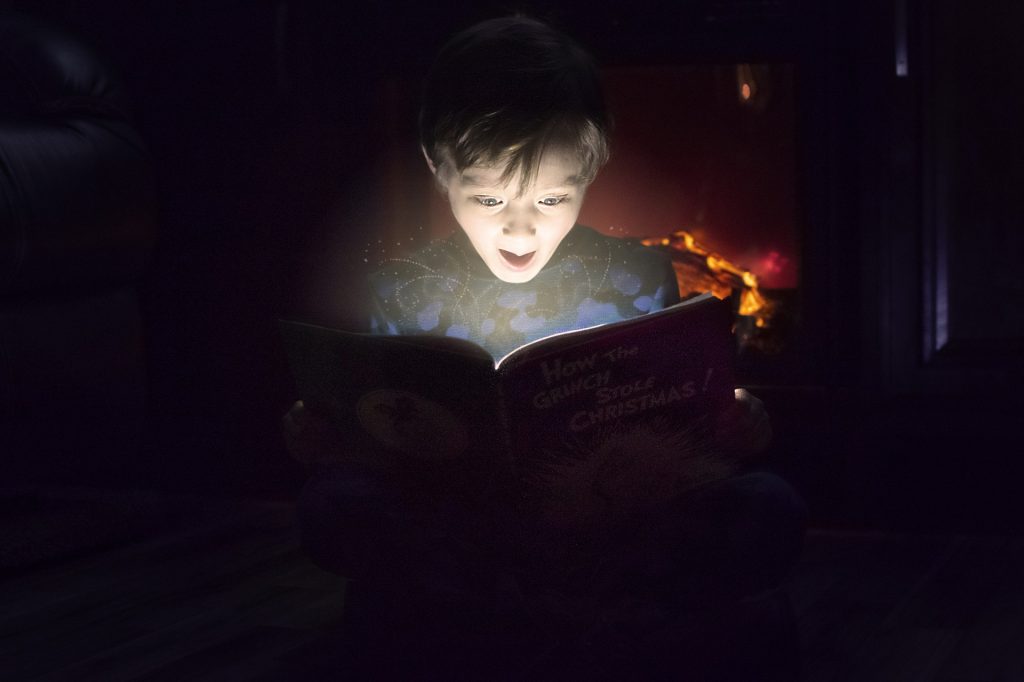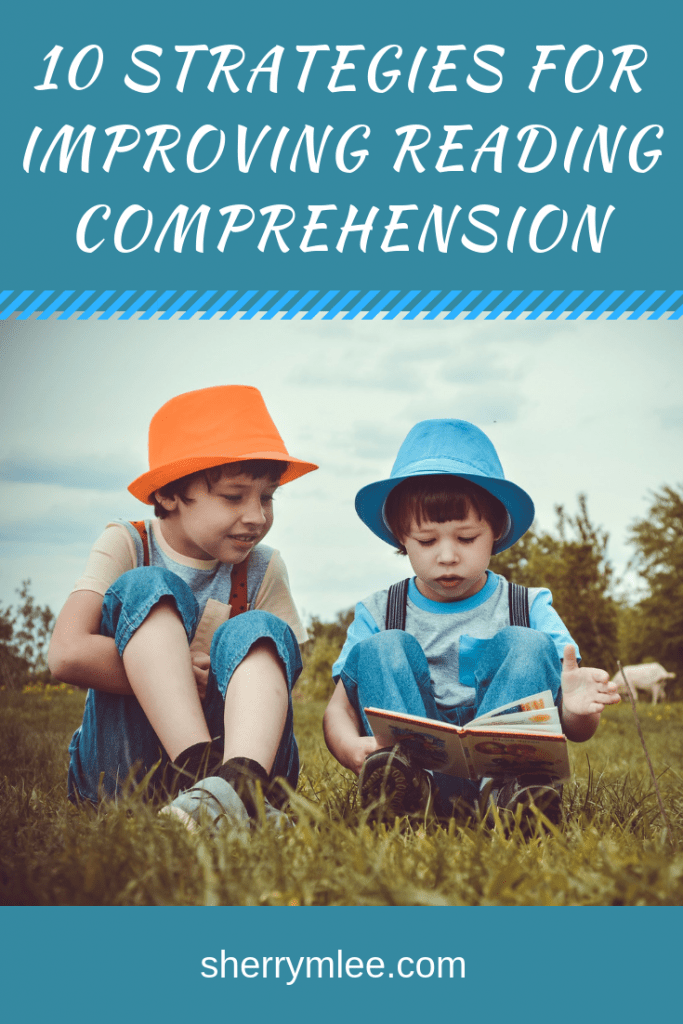I remember reading with a grade 8 student years ago who could read like the wind. No word seemed to slow him down. The problem? He was retaining or comprehending very little of what he was reading. This sometimes can be expected as is often seen with individuals who are learning the English language but are quick to master English word reading. Other times, the reason for it is a mystery. Actually, we’ve likely all been there at some point where we are reading and lose track of what we are reading about. Improving reading comprehension is essential as it is the difference between just reading words and the words on the page coming to life! This post goes over my favorite strategies for improving reading comprehension.
To be honest, it can be more difficult to teach an individual who reads words easily how to read with meaning than it is to teach individuals who struggle to read the words but are quick to understand what he or she does read. So what can be done to help these word readers out? What can be done to help ensure words on the page are more than just that? How can we make sure we are improving reading comprehension levels?
*Disclaimer: This post contains affiliate links, meaning that I make a small commission on purchases made, helping me to support my family at no extra cost to you. Thank you for your support!

Here are 10 of my favorite strategies for improving reading comprehension once an individual is reading words.
1) Teach punctuation and the purpose of it.
Does the reader know the purpose of periods, question marks, quotation marks, commas, or exclamation marks? It is often assumed that this is learned quickly. However, I can tell you from personal experience that this is not the case and that specific lessons on this
The comma is extremely important to understand as often definitions will be provided between commas or there will be additional information given after one. For example, a sentence may be, “Mrs. Anderson, the gardener, immediately entered the kitchen.” Who is Mrs. Anderson? How do we know? Another example may be, “Luckily, as the boy dragged himself along the river, he came across a ford, where the water is shallow enough to walk across, and managed to get safely to the opposite side where he knew he could get help.” What is
Of course, there are many other uses for the comma as well. This is where the punctuation hunts will come in handy to show the reader the many ways a comma is used.
2) Slow the reader down and visualize.
Once punctuation is understood, it is necessary to encourage the reader to slow down, taking breaks and pausing at the end of each sentence. Teach the reader that the end of a sentence also means that it is time to pause briefly to create a picture in his or her mind of what just happened in the sentence. It is like creating a mini-movie in the mind as a lot of ‘pictures’ will be taken and put together to make meaning out of what is being read.
3) Encourage the individual to read with expression.
Does the reader tend to read in a monotone voice? Even though word readers can often read quickly, expression and pausing at end of sentence punctuation may not be happening. Model what it means to read with expression and encourage the individual to read like that as well. Again, paying attention to punctuation can help here as well as being attentive to how characters would be feeling.
When reading with expression, it is important to take note of punctuation, pausing at the end of sentences rather than at the end of lines when sentences go over more than one line on a page. Encouraging the reader to raise his or her voice a bit when reading aloud and a question is being asked in a book can also help. A fun activity is changing one’s voice to match the character when a character is speaking.

4) Make connections between the reader’s life and the story.
It is essential for readers to make connections between his or her own life and what is taking place in a story. These connections will be different for everyone, but they allow the readers to engage with what is taking place. Some may share an experience with characters in the story. Others won’t relate directly but simply imagining a situation and comparing it with their own lives will help build understanding. Making connections is also needed to make inferences. You can read more about that here.
5) Allow opportunities for readers to listen to themselves read.
Providing opportunities for individuals to listen to themselves read can make a big difference for some. A whisper phone may be particularly helpful for providing that immediate feedback or you can have the reader recorded on a device and play it back to him or her.
6) Teach the importance of a synopsis as well as book and chapter titles.
Book and chapter titles along with a book’s synopsis each give clues for what is to come in a story. We rarely go to a movie without checking out the trailer first. The same should go for reading. Before reading, check out the synopsis and titles within the book. Support the reader in thinking about things he or she is reminded of when reading them. Use these clues to have the reader make connections between his or her own life as well as to make predictions for what is to come.
The purpose of making predictions is not to be correct, but to have something to compare what actually happens in the story to. In fact, books would be boring if predictions were always correct. However, making predictions allows for better understanding when the individual is able to exclaim, “Oh, I thought this was going to happen, but that happened instead!”
7) Make vocabulary meaningful.
I saw a cartoon when I last went to the doctor that had a professor congratulating a medical student for his wonderful paper. It read, “Congratulations! This is very well-written. In fact, I couldn’t understand a word of it!” I thought it was funny because that’s how I would feel if I picked up a medical journal. I simply lack the vocabulary that would be necessary to understand it!
Supporting the individual in making sure that vocabulary is understood can make a big difference. Remember my post about why teaching phonics isn’t enough? One sentence my group came across was, “The moose waded in the water.” The student asked, “What is the moose waiting for?” Up until the word “waded” was specifically taught, that sentence had a completely different meaning for the students I was working with since neither of them knew what ‘waded’ meant until it was specifically taught along with other branches of it they already understood, such as a “wading pool.”
8) Teach empathy.
Have conversations about how characters would be feeling and why. Has the reader ever felt like that? Building these empathic connections helps readers in ensuring that
9) Teach the who, what, where strategy.
The who, what, where strategy is one that encourages the reader to pause frequently when reading and answer the following questions. “Who is in the scene? What is happening? Where are they?” This all seems simple, but can be valuable in ensuring that comprehension is taking place.
For this strategy, I like to either have it happen at the end of a paragraph, page, or chapter, depending on where the student is currently at with this. Another tool I have used is a timer when working with larger groups, pausing after a set number of minutes. It can work either way. At the stopping point, individuals are to answer the 3 questions before continuing to read. Once this is easily mastered, I increase the amount read and eventually also add questions such as, “How are the characters feeling?” or “Why is the character doing that?”

10) Model the Strategies
It is super beneficial to our kids to practice what we preach. When our children see us using the strategies we talk about, it becomes meaningful. Not doing so is like giving our kids a cookbook and not explaining any of the terms or steps. Just like we model how to read a cookbook, we need to model how to read all other types of reading materials and genres.
By modeling, I don’t mean that us adults have to be correct. In fact, modeling for our kids how we overcome mistakes or go back to check our understanding of
Helpful Resource
My absolute favorite resource to use when teaching reading is The Reading Strategies Book by Jennifer Serravallo. What I LOVE about this resource is that each and every page is a one-page lesson with examples. Each page also states the reading level that the lesson is ideal for. Units are divided into sections such as comprehension or fluency, then filled with those one-page lessons. It truly is awesome for anyone in a teaching role.
If you are looking for reading strategies to go over with individuals, definitely check out some of my other posts like The Best Reading Comprehension Strategies, Five Quick Tips for Fostering a Reading Environment, Tips for Helping Readers Make Inferences, Introducing Tone and Mood to Young Readers, and Things Watching TV and Reading Should Have in Common.

How About You?
Do you have a loved one that struggles with reading? How do you work on improving reading comprehension when working with your child? Do you know of other strategies for working on improving reading comprehension that I didn’t mention here? What are your favorite reading strategies to use when reading with your children? Let me know in the comments below.





40 Comments
Thanks for this list, really helpful. Will dig deeper during reading time with my kids.
Happy to hear this is helpful for you, Pheng! 🙂
This was very helpful and I will be implementing these things while my son is ready. Thank you!!
That’s great, Zaneta! 🙂
I love this post! Reading can be a chore sometimes with kids, but these tips make it sound so fun! I was a big reader growing up, and I found that listening to books on tape really helped me want to read more. Hopefully, I can do the same for my kids.
I loved listening to books and following along when I was younger and have recently started enjoying audiobooks as an adult. Many of these strategies will work for both reading independently and listening to audiobooks. Thank you for reading this, Monica! 🙂
I have a 3 year old who is just learning to read and I found this to be very helpful. I particularly like the idea of using empathy. Teaching her to feel what the character feels will help slow her down and encourage her to live in the story.
I’m so glad you found this post helpful, Natasha! 🙂
This is a great list, I think I can also use it as an adult. Since I’ve been back in college there have been some books that were so tedious. I will look at this list when I need to read them.
Thank you,
Liliana
So glad it’s helpful! Thank you for reading it, Liliana! 🙂
This is a great resource! I have a 6 year old who struggles with reading and I love the idea about talking to him about the who, what, and why and helping him to connect with what he is reading!
Thanks!
I’m pleased that you found it helpful! Thank you for reading it! 🙂
I appreciate this article. I will use it when teaching my children. I really like the empathy part, because that not only helps with reading comprehension, but learning real life lessons from literature.
It sure does! That can be key to connecting to the characters and truly becoming engaged with a story! Thank you for reading this and taking the time to comment, Leiloni! 🙂
Interesting post. I never really thought about this. I learned a lot!
Glad you enjoyed it, Catherine! 🙂
Great post. I definitely think the importance of punctuation is totally underrated and make a difference in truly understanding a sentence I’ve been looking at that book for a long time so I’m glad to get some info from someone about it. Thanks!
Understanding punctuation definitely makes a big difference in one’s reading comprehension! 🙂
Great Tips! I honestly have not heard of building empathetic connections through the character to help engage the little reader… but it is absolute genius to ensure little ones are engaged and involved. 🙂
It’s also a great skill for them to transfer over into everyday life. 🙂
As a teacher-turned-SAHM, I appreciate every one of these! I always love teaching a kiddo to read with expression, because if you read with expression, you HAVE to comprehend what you’re reading to understand the correct expression.
Yes, definitely! When I listen to kids read, I can quickly tell if they have comprehension simply by the expression they read with. 🙂
These are fabulous tips. Growing up, my brother had such a hard time knowing what he was reading, and I remember my mom (who read the dictionary in her spare time as a middle schooler) used to get so frustrated that he couldn’t slow down enough to actually know what he was reading. This is a great resource, one I wish she had had, and one that I’m going to keep for when my toddler needs it. Comprehension is so important…without it, there’s no real reason to read, and reading is such a fun thing.
Reading can be a lot of fun when the understanding is there. I’m glad this is helpful for you. 🙂
Awesome tips! I’ll have to save this for when my kids start to read!
Thanks, Caitlin! 🙂
These are some great tips! I also think it’s important to encourage everyone to read any type of books that they like.
Yes, it can certainly help with motivation! 🙂
I love this, especially #5. I was never a good reader and I think this would have really helped me. Something to keep in mind for my kids.
Thank you for sharing your story. #5 is important. I believe we are encouraged to ‘read in our heads’ way too quickly, especially for auditory learners. I still find myself whispering what I’m reading regularly. 🙂
These are simple and practical suggestions to help parents who may not know how to help their kids.
Thank you for taking time to read this, Mamie! 🙂
Great tips here! I know I can already start implementing some with my almost 4-year-old! Thanks!
Yes, many of these strategies can be implemented when reading aloud to our kids as well. 🙂
There are a lot of kids who don’t know how to read and who don’t have a passion to learn. I love these tips so much!
Glad you love these tips! I like to believe all kids have a passion to learn and that we just have to figure out how to bring out that passion. For some, it is easily seen. For others, not so much, lol! BUT, when the passion does become evident, it is SOOOO worth it! 🙂
This a so great! I love these tips as I use some of these in speech therapy. Some of them are new but make total sense in helping the child develop the whole picture with reading comprehension!
So glad they are helpful to you, Becky! 🙂